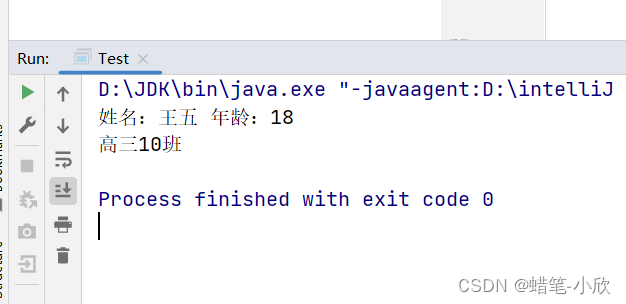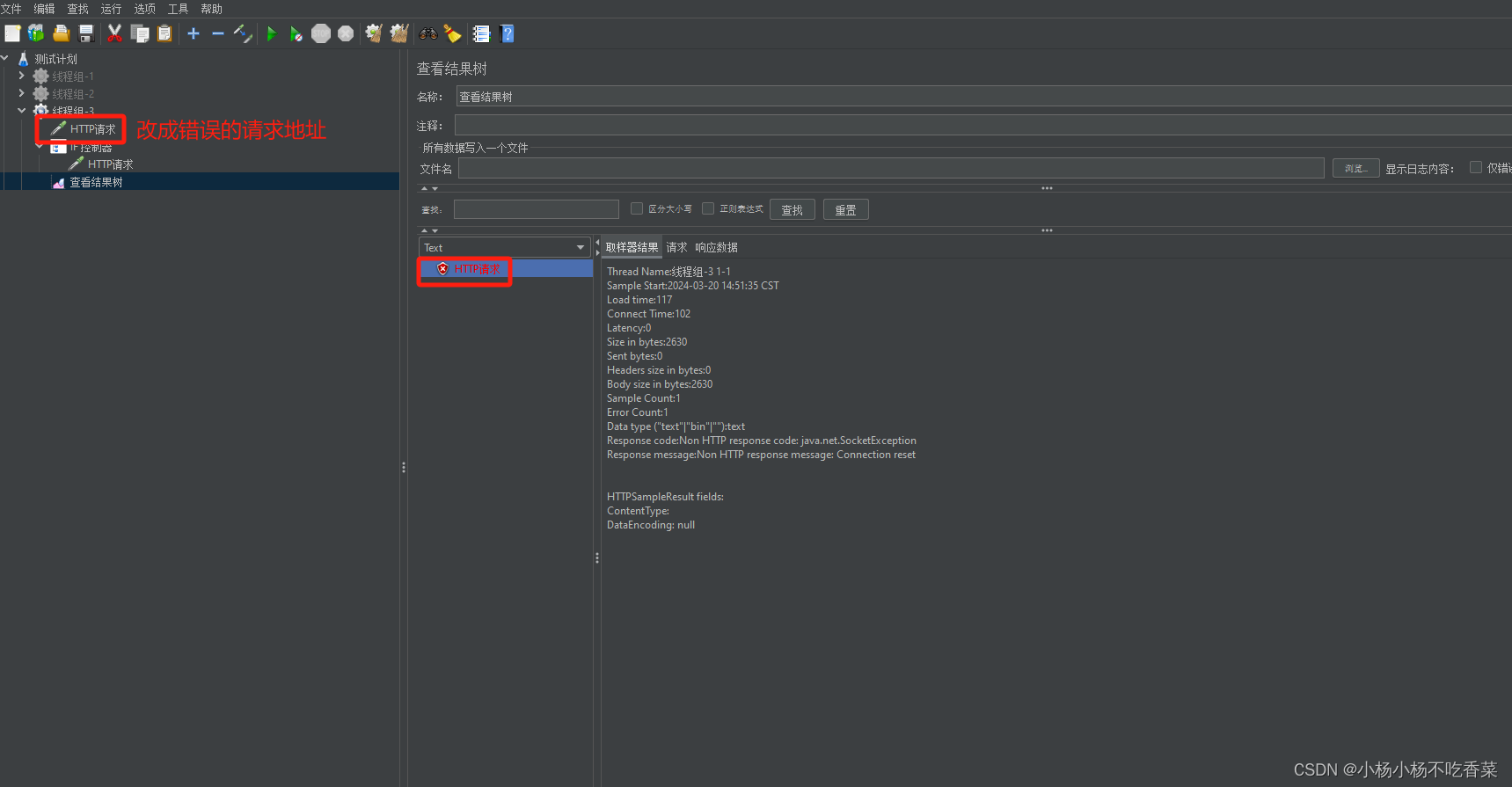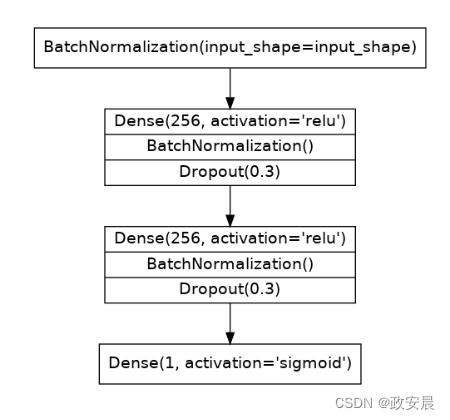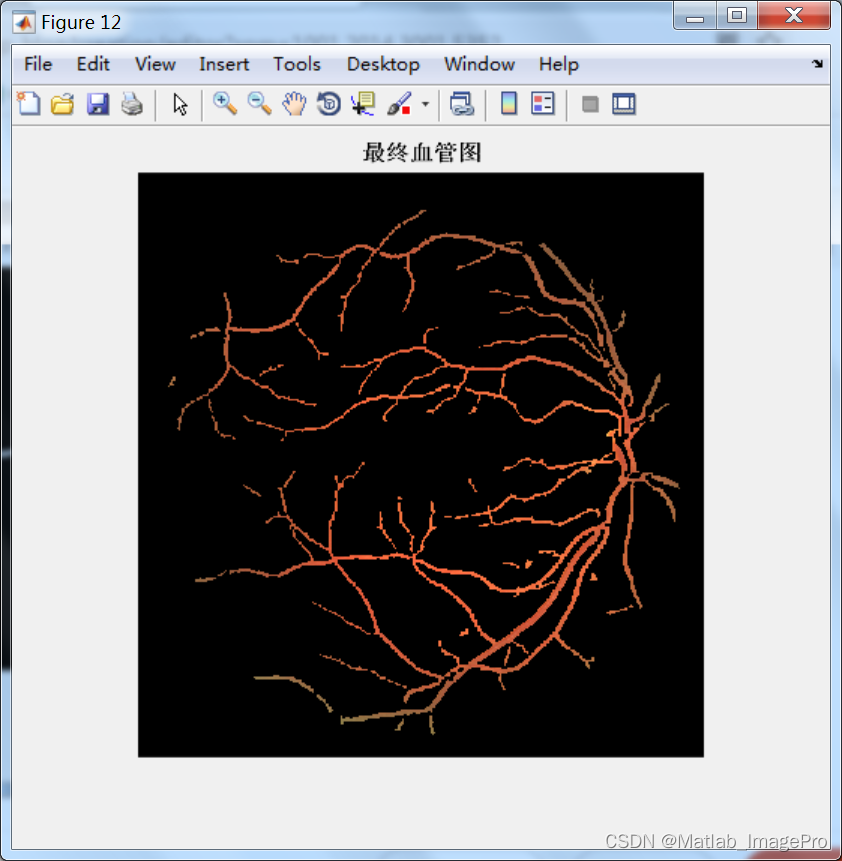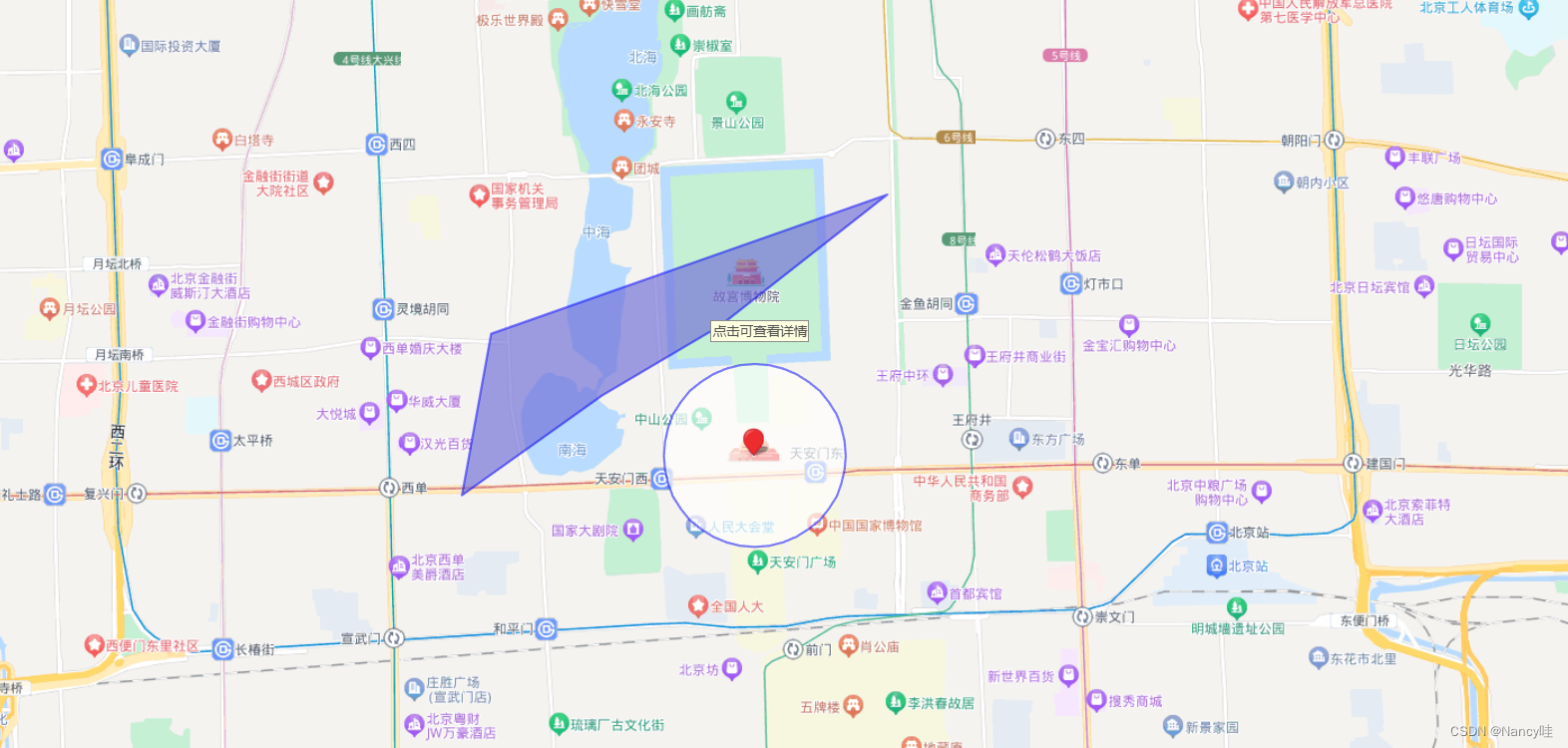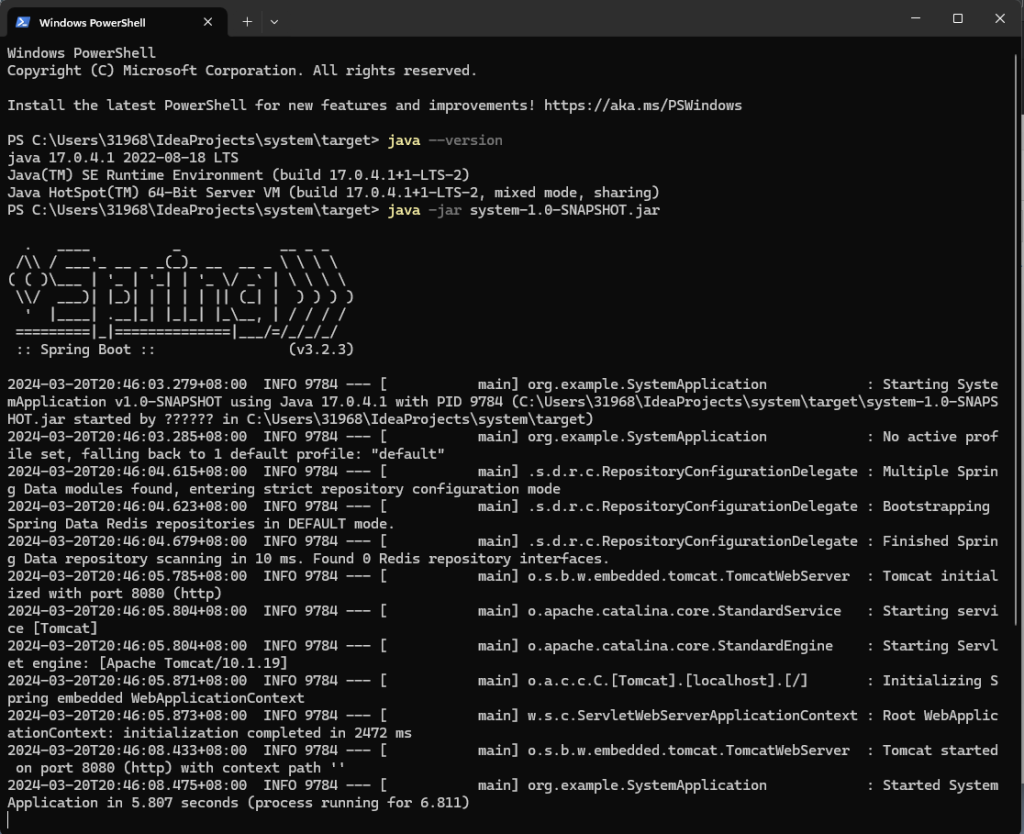目录
- 树状数组
- 307. 区域和检索 - 数组可修改
- 406. 根据身高重建队列
- 673. 最长递增子序列的个数
- 1409. 查询带键的排列
- 并查集
- 128. 最长连续序列
- 130. 被围绕的区域
- 二叉树
- 94. 二叉树的中序遍历
- 104. 二叉树的最大深度
- 101. 对称二叉树
- 543. 二叉树的直径
- 108. 将有序数组转换为二叉搜索树
树状数组
307. 区域和检索 - 数组可修改
给你一个数组 nums ,请你完成两类查询。
其中一类查询要求 更新 数组 nums 下标对应的值
另一类查询要求返回数组 nums 中索引 left 和索引 right 之间( 包含 )的nums元素的 和 ,其中 left <= right
实现 NumArray 类:
NumArray(int[] nums) 用整数数组 nums 初始化对象
void update(int index, int val) 将 nums[index] 的值 更新 为 val
int sumRange(int left, int right) 返回数组 nums 中索引 left 和索引 right 之间( 包含 )的nums元素的 和 (即,nums[left] + nums[left + 1], ..., nums[right])
class NumArray {
private:
vector<int> tree;
vector<int> &nums;
int lowBit(int x){
return x & -x;
}
void add(int index, int val){
while(index < tree.size()){
tree[index] += val;
index += lowBit(index);
}
}
int prefixSum(int index){
int sum = 0;
while(index > 0){
sum += tree[index];
index -= lowBit(index);
}
return sum;
}
public:
NumArray(vector<int>& nums) : tree(nums.size() + 1), nums(nums) {
for(int i = 0; i < nums.size(); i++){
add(i + 1, nums[i]);
}
}
void update(int index, int val) {
add(index + 1, val - nums[index]);
nums[index] = val;
}
int sumRange(int left, int right) {
return prefixSum(right + 1) - prefixSum(left);
}
};
406. 根据身高重建队列
假设有打乱顺序的一群人站成一个队列,数组 people 表示队列中一些人的属性(不一定按顺序)。每个 people[i] = [hi, ki] 表示第 i 个人的身高为 hi ,前面 正好 有 ki 个身高大于或等于 hi 的人。
请你重新构造并返回输入数组 people 所表示的队列。返回的队列应该格式化为数组 queue ,其中 queue[j] = [hj, kj] 是队列中第 j 个人的属性(queue[0] 是排在队列前面的人)。
示例 1:
输入:people = [[7,0],[4,4],[7,1],[5,0],[6,1],[5,2]]
输出:[[5,0],[7,0],[5,2],[6,1],[4,4],[7,1]]
解释:
编号为 0 的人身高为 5 ,没有身高更高或者相同的人排在他前面。
编号为 1 的人身高为 7 ,没有身高更高或者相同的人排在他前面。
编号为 2 的人身高为 5 ,有 2 个身高更高或者相同的人排在他前面,即编号为 0 和 1 的人。
编号为 3 的人身高为 6 ,有 1 个身高更高或者相同的人排在他前面,即编号为 1 的人。
编号为 4 的人身高为 4 ,有 4 个身高更高或者相同的人排在他前面,即编号为 0、1、2、3 的人。
编号为 5 的人身高为 7 ,有 1 个身高更高或者相同的人排在他前面,即编号为 1 的人。
因此 [[5,0],[7,0],[5,2],[6,1],[4,4],[7,1]] 是重新构造后的队列。
class Solution {
public:
vector<vector<int>> reconstructQueue(vector<vector<int>>& people) {
sort(people.begin(), people.end(), [](const vector<int>& u, const vector<int>& v){
return u[0] < v[0] || (u[0] == v[0] && u[1] > v[1]);
});
int n = people.size();
vector<vector<int>> ans(n);
for(vector<int>& person : people){
int spaces = person[1] + 1;
for(int i = 0; i < n; i++){
if(ans[i].empty()){
spaces--;
if(!spaces){
ans[i] = person;
break;
}
}
}
}
return ans;
}
};
673. 最长递增子序列的个数
给定一个未排序的整数数组 nums , 返回最长递增子序列的个数 。
注意 这个数列必须是 严格 递增的。
示例 1:
输入: [1,3,5,4,7]
输出: 2
解释: 有两个最长递增子序列,分别是 [1, 3, 4, 7] 和[1, 3, 5, 7]。
class Solution {
public:
int findNumberOfLIS(vector<int>& nums) {
int n = nums.size();
vector<int> dp(n, 1), cnt(n, 1);
int maxs = 1;
int count = 0;
for(int i = 0; i < n; i++){
for(int j = 0; j < i; j++){
if(nums[j] < nums[i]){
if(dp[i] < dp[j] + 1){
dp[i] = dp[j] + 1;
cnt[i] = cnt[j];
}
else if(dp[i] == dp[j] + 1){
cnt[i] += cnt[j];
}
}
}
if(dp[i] > maxs){
maxs = dp[i];
count = cnt[i];
}
else if(dp[i] == maxs){
count += cnt[i];
}
}
return count;
}
};
1409. 查询带键的排列
给定一个正整数数组 queries ,其取值范围在 1 到 m 之间。 请你根据以下规则按顺序处理所有 queries[i](从 i=0 到 i=queries.length-1):
首先,你有一个排列 P=[1,2,3,...,m]。
对于当前的 i ,找到 queries[i] 在排列 P 中的位置(从 0 开始索引),然后将它移到排列 P 的开头(即下标为 0 处)。注意, queries[i] 的查询结果是 queries[i] 在 P 中移动前的位置。
返回一个数组,包含从给定 queries 中查询到的结果。
示例 1:
输入:queries = [3,1,2,1], m = 5
输出:[2,1,2,1]
解释:处理 queries 的过程如下:
对于 i=0: queries[i]=3, P=[1,2,3,4,5], 3 在 P 中的位置是 2,然后我们把 3 移动到 P 的开头,得到 P=[3,1,2,4,5] 。
对于 i=1: queries[i]=1, P=[3,1,2,4,5], 1 在 P 中的位置是 1,然后我们把 1 移动到 P 的开头,得到 P=[1,3,2,4,5] 。
对于 i=2: queries[i]=2, P=[1,3,2,4,5], 2 在 P 中的位置是 2,然后我们把 2 移动到 P 的开头,得到 P=[2,1,3,4,5] 。
对于 i=3: queries[i]=1, P=[2,1,3,4,5], 1 在 P 中的位置是 1,然后我们把 1 移动到 P 的开头,得到 P=[1,2,3,4,5] 。
因此,包含结果的数组为 [2,1,2,1] 。
struct BIT{
vector<int> a;
int n;
BIT(int _n): n(_n), a(_n + 1){}
static int lowbit(int x){
return x & (-x);
}
int query(int x){
int ret = 0;
while(x){
ret += a[x];
x -= lowbit(x);
}
return ret;
}
void update(int x, int dt){
while(x <= n){
a[x] += dt;
x += lowbit(x);
}
}
};
class Solution {
public:
vector<int> processQueries(vector<int>& queries, int m) {
int n = queries.size();
BIT bit(m + n);
vector<int> pos(m + 1);
for (int i = 1; i <= m; ++i) {
pos[i] = n + i;
bit.update(n + i, 1);
}
vector<int> ans;
for (int i = 0; i < n; ++i) {
int& cur = pos[queries[i]];
bit.update(cur, -1);
ans.push_back(bit.query(cur));
cur = n - i;
bit.update(cur, 1);
}
return ans;
}
};
并查集
128. 最长连续序列
给定一个未排序的整数数组 nums ,找出数字连续的最长序列(不要求序列元素在原数组中连续)的长度。
请你设计并实现时间复杂度为 O(n) 的算法解决此问题。
示例 1:
输入:nums = [100,4,200,1,3,2]
输出:4
解释:最长数字连续序列是 [1, 2, 3, 4]。它的长度为 4。
使用哈希表,先找到最小的元素,再遍历,我之前的方法是直接使用sort(nums.begin(), nums.end());
class Solution {
public:
int longestConsecutive(vector<int>& nums) {
unordered_set<int> num_set;
for(int num : nums){
num_set.insert(num);
}
int longstStreak = 0;
for(int num : num_set){
if(!num_set.count(num - 1)){
int currentNum = num;
int currentStreak = 1;
while(num_set.count(currentNum + 1)){
currentNum += 1;
currentStreak += 1;
}
longstStreak = max(longstStreak, currentStreak);
}
}
return longstStreak;
}
};
130. 被围绕的区域
给你一个 m x n 的矩阵 board ,由若干字符 ‘X’ 和 ‘O’ ,找到所有被 ‘X’ 围绕的区域,并将这些区域里所有的 ‘O’ 用 ‘X’ 填充。

考虑边界上的‘O’,将其置为‘A’,之后再对矩阵中剩下的‘O’进行操作。
class Solution {
public:
int n, m;
void dfs(vector<vector<char>>& board, int x, int y){
if(x < 0 || x >= n || y < 0 || y>= m || board[x][y] != 'O'){
return;
}
board[x][y] = 'A';
dfs(board, x + 1, y);
dfs(board, x - 1, y);
dfs(board, x, y + 1);
dfs(board, x, y - 1);
}
void solve(vector<vector<char>>& board) {
n = board.size();
if(n == 0){
return;
}
m = board[0].size();
for(int i = 0; i < n; i++){
dfs(board, i, 0);
dfs(board, i, m - 1);
}
for(int i = 1; i < m - 1; i++){
dfs(board, 0, i);
dfs(board, n - 1, i);
}
for(int i = 0; i < n; i++){
for(int j = 0; j < m; j++){
if(board[i][j] == 'A'){
board[i][j] = 'O';
}
else if(board[i][j] == 'O'){
board[i][j] = 'X';
}
}
}
}
};
二叉树
94. 二叉树的中序遍历
给定一个二叉树的根节点 root ,返回 它的 中序 遍历 。
方法一:递归
class Solution {
public:
void inorder(TreeNode* root, vector<int>& v){
if(root == nullptr){
return;
}
else{
inorder(root->left, v);
v.push_back(root->val);
inorder(root->right, v);
}
}
vector<int> inorderTraversal(TreeNode* root) {
vector<int> v;
inorder(root, v);
return v;
}
};
方法二:迭代(使用栈)
class Solution {
public:
vector<int> inorderTraversal(TreeNode* root) {
vector<int> v;
stack<TreeNode*> stk;
while(!stk.empty() || root != nullptr){
while(root != nullptr){
stk.push(root);
root = root->left;
}
root = stk.top();
stk.pop();
v.push_back(root->val);
root = root->right;
}
return v;
}
};
104. 二叉树的最大深度
给定一个二叉树 root ,返回其最大深度。
二叉树的 最大深度 是指从根节点到最远叶子节点的最长路径上的节点数。
方法一:深度优先搜索
class Solution {
public:
int maxDepth(TreeNode* root) {
if(root == nullptr){
return 0;
}
return max(maxDepth(root->left), maxDepth(root->right)) + 1;
}
};
方法二:广度优先搜索(队列)
class Solution {
public:
int maxDepth(TreeNode* root) {
if(root == nullptr){
return 0;
}
queue<TreeNode*> q;
q.push(root);
int ans = 0;
while(!q.empty()){
int s = q.size();
while(s > 0){
TreeNode* temp = q.front();
q.pop();
if(temp->left){
q.push(temp->left);
}
if(temp->right){
q.push(temp->right);
}
s--;
}
ans++;
}
return ans;
}
};
101. 对称二叉树
给你一个二叉树的根节点 root , 检查它是否轴对称。

方法一:递归
class Solution {
public:
bool check(TreeNode* p, TreeNode* q){
if(p == nullptr && q == nullptr){
return true;
}
if(p == nullptr || q == nullptr){
return false;
}
return p->val == q->val && check(p->left, q->right) && check(p->right, q->left);
}
bool isSymmetric(TreeNode* root) {
return check(root->left, root->right);
}
};
方法二:迭代(队列)
class Solution {
public:
bool check(TreeNode* u, TreeNode* v){
queue<TreeNode*> q;
q.push(u);
q.push(v);
while(!q.empty()){
u = q.front();
q.pop();
v = q.front();
q.pop();
if(u == nullptr && v == nullptr){
continue;
}
if(u == nullptr || v == nullptr || u->val != v->val){
return false;
}
q.push(u->left);
q.push(v->right);
q.push(u->right);
q.push(v->left);
}
return true;
}
bool isSymmetric(TreeNode* root) {
return check(root->left, root->right);
}
};
543. 二叉树的直径
给你一棵二叉树的根节点,返回该树的 直径 。
二叉树的 直径 是指树中任意两个节点之间最长路径的 长度 。这条路径可能经过也可能不经过根节点 root 。
两节点之间路径的 长度 由它们之间边数表示。

class Solution {
public:
int ans = 1;
int depth(TreeNode* root){
if(root == nullptr){
return 0;
}
int l = depth(root->left);
int r = depth(root->right);
ans = max(ans, l + r + 1);
return max(l, r) + 1;
}
int diameterOfBinaryTree(TreeNode* root) {
depth(root);
return ans - 1;
}
};
108. 将有序数组转换为二叉搜索树
给你一个整数数组 nums ,其中元素已经按 升序 排列,请你将其转换为一棵平衡二叉搜索树。

直接对数组进行转换
class Solution {
public:
TreeNode* helper(vector<int> nums, int left, int right){
if(left > right){
return nullptr;
}
int mid = (left + right) / 2;
TreeNode* root =new TreeNode(nums[mid]);
root->left = helper(nums, left, mid - 1);
root->right = helper(nums, mid + 1, right);
return root;
}
TreeNode* sortedArrayToBST(vector<int>& nums) {
return helper(nums, 0, nums.size() - 1);
}
};
